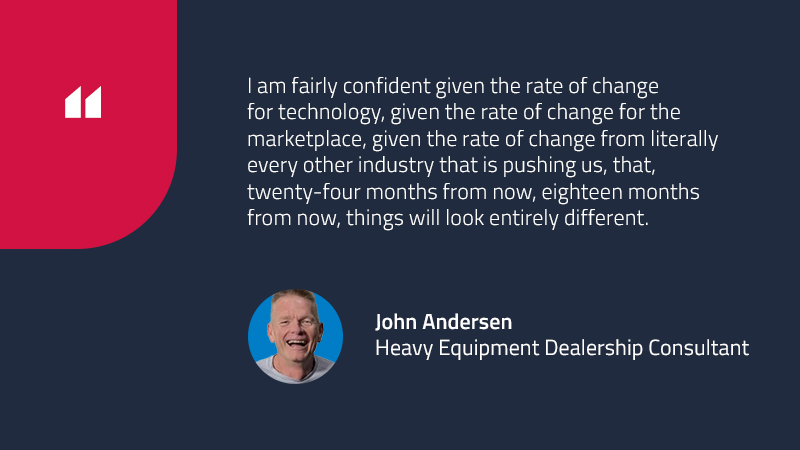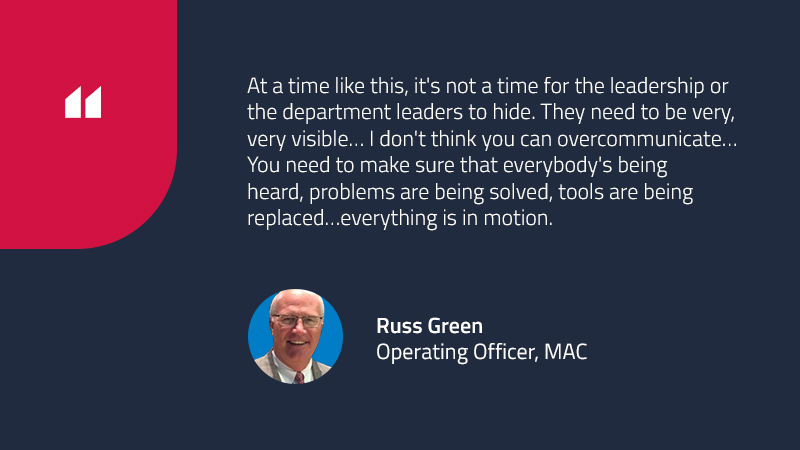The perfect storm is on the horizon—the next 18 to 24 months will be challenging for the heavy equipment dealer industry overall. And once the storm has passed, the industry won’t look quite the same. Is your dealership equipped to weather the storm and grow afterwards?
Every dealership has a few profit leaks. Last week, we hosted an interactive forum discussion where industry experts and dealers shared their insights and opinions on where the most common profit leaks can be found, and how to fix them. The discussion was led by three industry veterans with decades of experience between them—John Andersen, equipment dealership consultant, Lloyd Farnsworth from DIS, and Russ Green from Machinery Advisors Consortium (MAC).
Watch the Recording:
Here are the highlights from their discussion.
The Perfect Storm Forecast:
- OEMs have had an inventory surplus, or in some cases, an inventory shortage.
- Commodity pricing is lower than it usually is for this time of year.
- The shortage of skilled labor is ongoing.
- Political issues, new tariffs and trade wars are causing uncertainty and disruption within the marketplace.
- Technology disruptors: The digitization of the industry and the corresponding expansion of the market is changing the business. Dealerships that aren’t utilizing digital tools like AI could miss out on opportunities. The customer service experience has changed, and customers rely on a new level of communication and online connectivity (e.g. ordering their parts online).
With these challenges, you should be taking any opportunity to plug profit leaks across all departments at your dealership, so you can take on the headwinds.

Preparing for the Perfect Storm:
Each department has opportunities to help improve efficiency and profitability by plugging profit leaks.
Service:
- Increase service work when machines sales decrease.
- Are you rounding up each labor punch to the quarter hour? This can lead to extra hours per technician each month, which truly adds up. Pay attention to this.
- Promote service maintenance plans.
- Inspect every machine as it’s repaired to add billable lines.
- Ensure your staff is aligned with the same goals (e.g., incentive plans).
- Track every part that goes into your repair line.
- Ensure all rental equipment is inspected for damage and repair as soon as it’s back at your dealership to offset costs to the renter.
- Utilize the automated billing system in your DMS.
Parts:
- Move deadstock and overstock between branches before ordering these same parts.
- Perform regular cycle counts rather than annual counts.
- Accurately track, bill and replenish any parts used in service trucks.
Sales:
- Inspect all used equipment prior to providing trade-in value.
- Incentivize the movement of older equipment.
Overhead Items:
- Review your DMS bill to match user licenses and add-on products with your current needs. Ensure your bill matches your current needs!
- Take a closer look at your operational contracts (e.g. lifts, hoists, oil disposal) to see where you can save costs.
Teamwork is Essential:
To make it through the storm, it’s more than just dollars and cents—it’s about the people who can get the business through the tough times and onto the other side.
Taking the time to have short daily meetings to bring your department’s team in for a few minutes can ensure everyone is aligned with the department’s goals and expectations to know where priorities lie. It opens the dialogue to ensure that everyone is being heard, problems are being addressed, and everything is on the right track to perform quality work and maintain your department’s efficiency to benefit the dealership.
Dialogue on the service side has never been more important. Utilize a sales script at the parts counter.
Conduct an audit on your services and parts customers to examine the overlap between these lists. If a customer buys parts, but isn’t buying service from you, it’s a good time to find out why they’re buying parts but not service.

Make the Most of Your DMS:
Your DMS is a great tool for navigating the storm ahead and can help your business grow afterwards. Examine everything that your DMS has to offer. Take advantage of additional training, for all who use it at your dealership, to be aware of all that your DMS is capable of. Automate everything you can—from service scheduling to technician support in the field—in your service department to improve efficiency. Use your DMS to track key performance metrics for actionable insights to help make impactful business decisions.

At the end of the day, there’s no silver bullet solution. It’s taking these ideas, taking a closer look at each department’s efficiency, understanding the industry trends and being aware of customer expectations that can help weather your business in the coming storm.
![Fixed Absorption: Your Dealership’s Recession Shield [Infographic]](https://www.discorp.com/wp-content/uploads/2025/04/Blog-prev-190x190.jpg)


